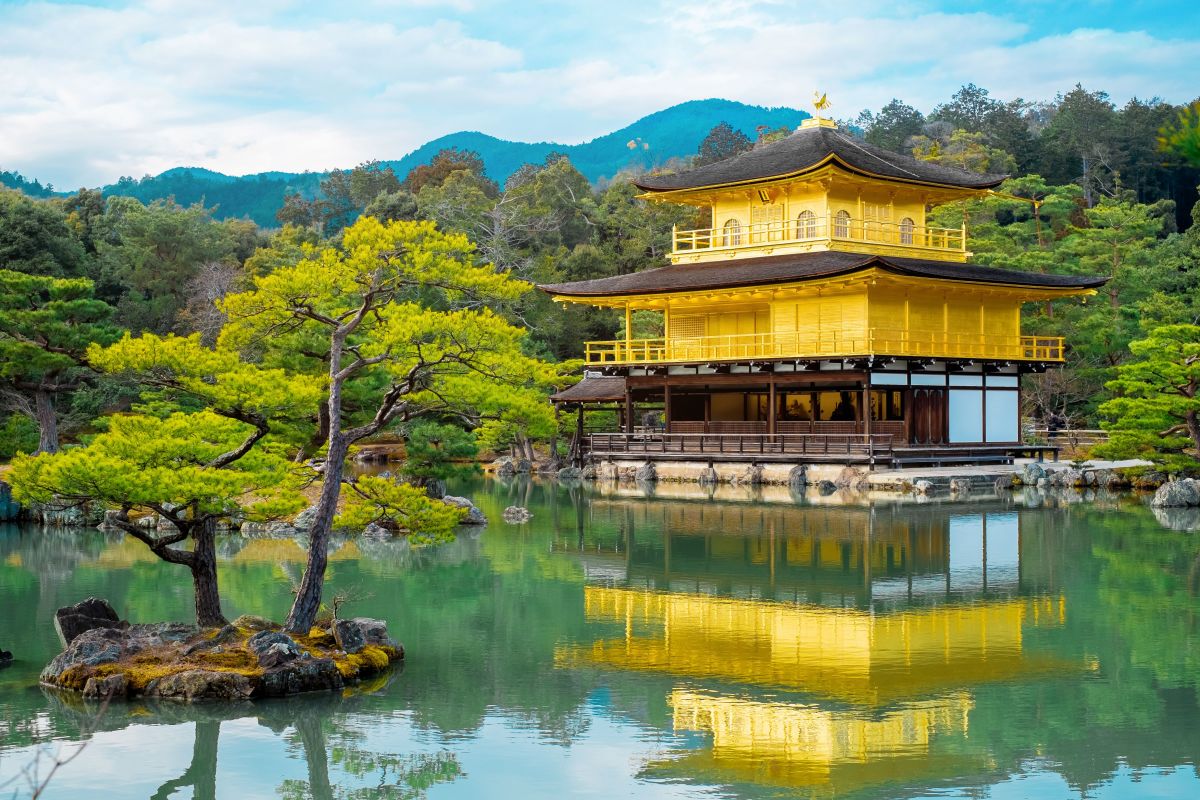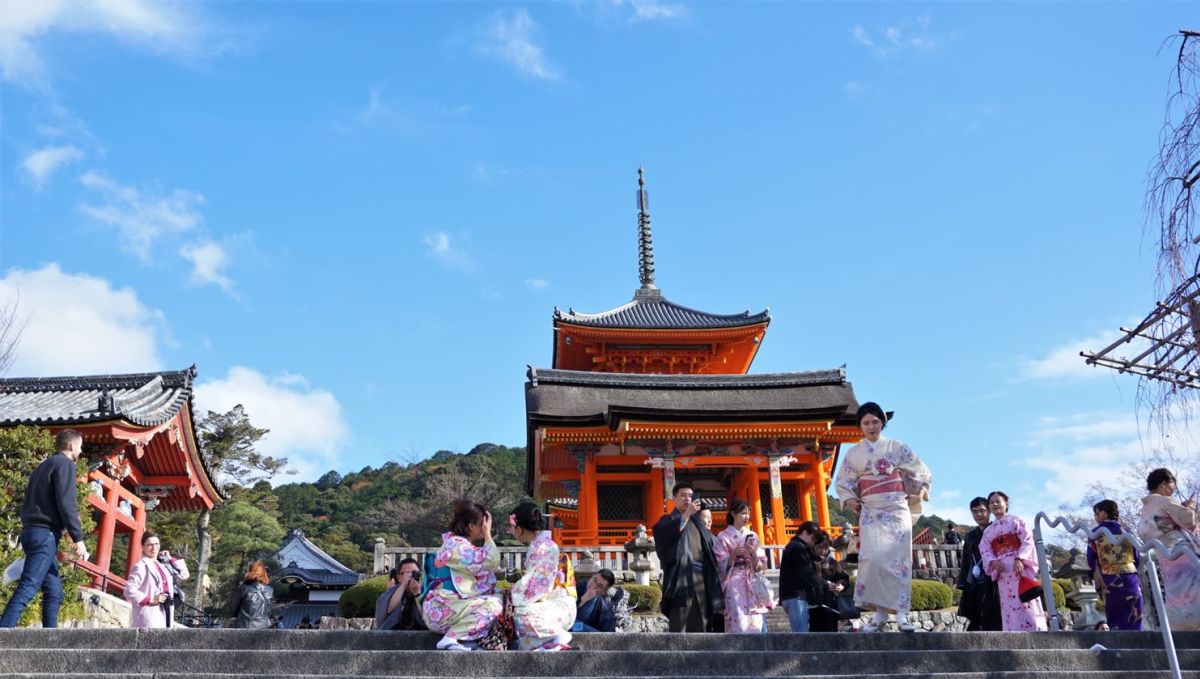
Japanese Buddhist Temples
Japan is a nation that spans an incredible spectrum of time and place, from ancient forests and mountains to cutting-edge, modern cityscapes. Amidst all this, it seems to maintain a sense of reverence no matter where you go, especially at its sites of spiritual significance. Though the crowded streets, skyscrapers and trains of Tokyo might make peace and transcendence feel a bit out of reach, both locals and travelers have a window into traditional Japanese life at the many temples that can be found across the archipelago of islands. The temples in Japan can truly be a highlight of your visit!
Spiritual Traditions of Japan
The main spiritual practices of Japan are Shinto and Buddhism. Shinto is the older of the two, and is an earth-centered folk spirituality that focuses on kami spirit-dedicated shrines as opposed to larger temple buildings. Shinto’s ancient beliefs and practices, however, are still highly integrated into Japanese culture.
Buddhism is the more official, societal religion, having come to Japan from China around 500 CE and now widespread across the nation. Shinto shrines and Buddhist temples can be found close to one another, often on the same footprint of land, but the Buddhisr presence is much more conspicuous with its large temples and other structures and practices. Japan tours are the perfect way to get to to know this culture, simultaneously highly modern and reverent of its ancient heritage, with a harmony that few cultures can claim.

Buddhism is sometimes considered a religion, while other times deemed a philosophy, and came from the Hindu tradition of India. The iconic Japanese Buddhist temple, Buddha statue, and robe-wearing monk are some of the quintessential representations of this beautiful tradition that can be seen across this country. Though these representations of such an ancient way of life may seem so far removed from its modern miracles, even at Tokyo temples - with their urban monks - can this enduring way of life be seen!
When traveling, showing respect for the cultures we visit is a top priority, especially when it involves spirituality and revered belief systems. Some knowledge and awareness principles apply to any Japan temple site you may be visiting, so let’s learn a little more about these sacred sites.

Japan Temples: The Basics
Many of us still unfamiliar with these works of cultural architecture might do a bit of word association (“Japanese Buddha temple”, for instance) as we dream of visiting Japan and learning about how its philosophy is expressed in buildings and customs. We may already know that Buddhism is widely practiced, and that Japanese temples must be common in order to have gained such popularity as an icon of this special country.
Indeed, temples are common in Japan - every municipality will have at least one, while some places cities will have hundreds and even thousands! Kyoto is an example of an area particularly rich in temples, having close to 1,600!
A common word for Buddhist temple in japanese is tera (?). A helpful tip to know is that when you may observe the spelling of spiritual sites, the word endings -teri, -ji or -in, temples are being referred to, while the endings -jinja, -ingu or -taisha indicate that a Shinto shrine is being is instead.
Mindfully planned, masterfully constructed and intricately decorated, the typical Japanese temple often has both Shinto and Buddhist elements. The overall temple temple layout is almost always more Buddhism-themed, and has a number of elements in accordance with Shichid? garan, a term that describes the “ideal” layout of a Buddhist temple. These elements include gates, main and lecture halls, roofed passageways, pagodas, a belfry, a scripture and books repository, and a graveyard.
A number of Buddhist schools of thought have influenced the building of the country’s temples, and the incredible construction and fascinating cultural significance has earned a few of them UNESCO World Heritage Status.The Fujisan and Kii Mountain Range areas are absolutely teeming with UNESCO recognized temples, shrines, forests and other incredible designated locations!
Where Can I Visit Some Famous Temples?
Tokyo has many temples to choose from (Sensoji and Zojoji being two top picks), but Meiji Shrine is a unique option. Rebuilt from destruction in World War II, Meiji is surrounded by lovely parkland and is the namesake of Emperor Meiji the Great, and his wife, Empress Sh?ken, and was built in 1915 (and rebuilt in 1958 with much public support).
Kyoto's Kinkakuji is undeniably one of the most amazing of them all, covered in gold leaf and shining its way into UNESCO’s coveted World Heritage Site list. As mentioned before, the near 1,600 temples around Kyoto offer an unparalleled opportunity for visiting travelers to explore. Don’t miss the stunning and popular Kiyomizu-dera!
Near Osaka is Todaiji, another UNESCO World Heritage Site with ancient roots. Dating back to the year 752, this large main hall and Daibutsu Great Buddha statue are highlights! Also, a must-see in the Osaka area (northeast of the city) is the great Kiyomizudera, considered to be one of the very best temples in all of Japan. Named after the gorgeous areas waterfall and featuring fine hardwood carpentry, it is a sight all its own.


Etiquette For Visiting a Japanese Shrine or Temple
The honor of visiting cultural sites in Japan is not to be taken lightly! These places and experiences are an intimate part of a country’s culture, and can be among the most special and enjoyable part of traveling. Here are a few tips for visiting a shrine or temple in Japan:
When in a shrine, both slight bows and deep bows, coin offerings, and clapping along with bell ringing to accompany prayers are common. When in a Buddhist temple, slight bows are the way to go, along with incense burning, bell ringing without clapping, and beads or rosaries to accompany prayers are the norm.
Conservative dress, covering arms and legs, is called for when visiting temples. Be sure to pay attention to what footwear is being worn inside the temple, and use the slippers when they are provided!
When traveling in Japan, temple visits can easily be the highlight of your trip. Their conspicuous and iconic presence in Japan’s heritage and landscape, and wide international recognition by cultural organizations, have gilded them as one of Japan’s outstanding treasures. Contact our Travel Specialists today to start planning a cultural experience in Japan that you will treasure for the rest of your life!

